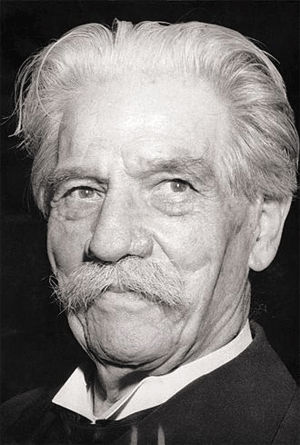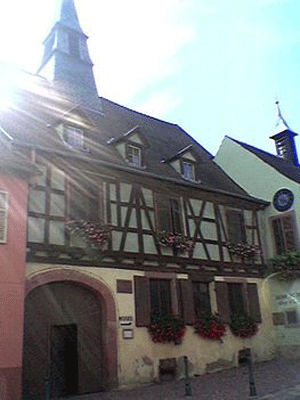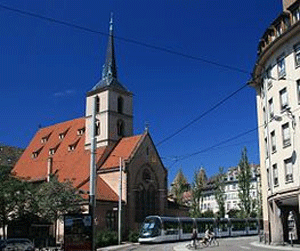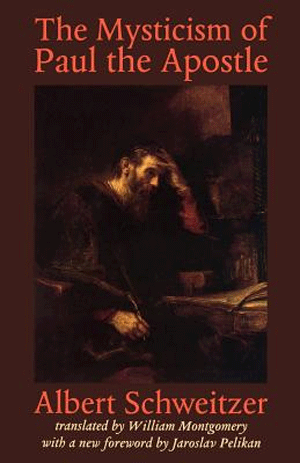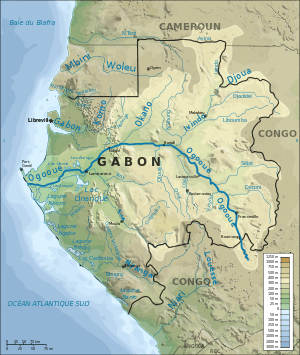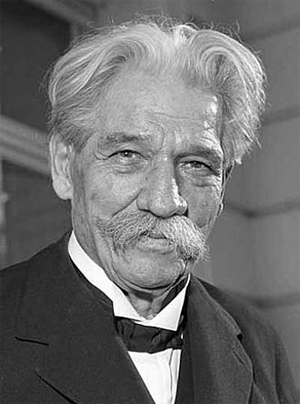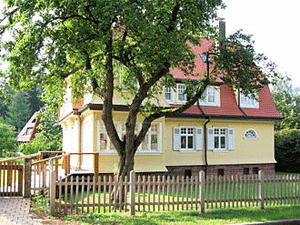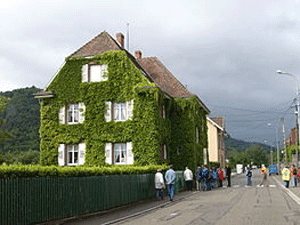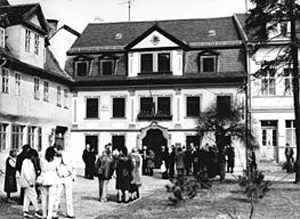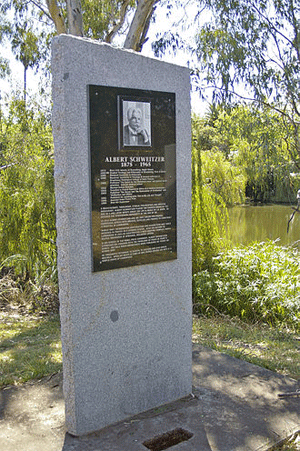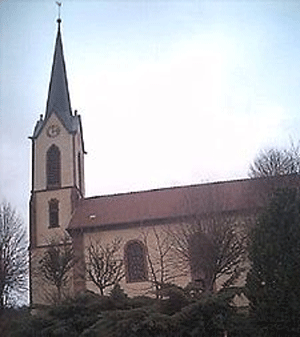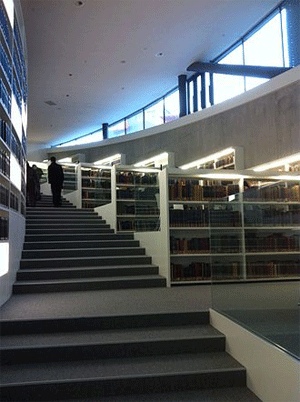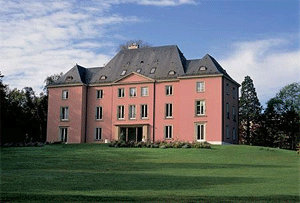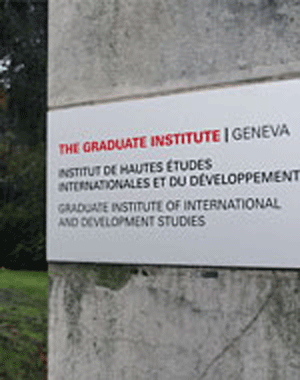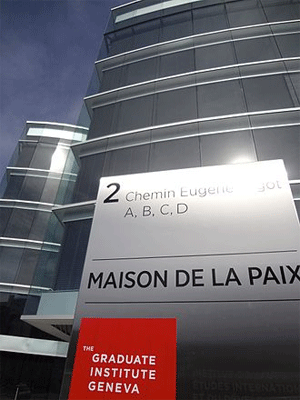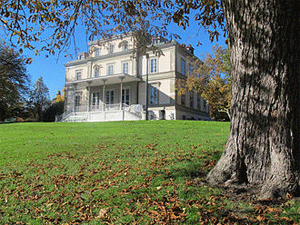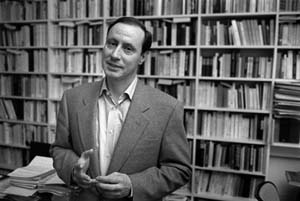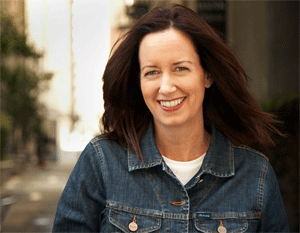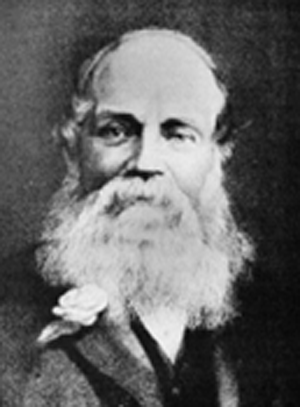Re: Freda Bedi, by Wikipedia
Society for Psychical Research
by Wikipedia
Accessed: 4/26/19
NOTICE: THIS WORK MAY BE PROTECTED BY COPYRIGHT
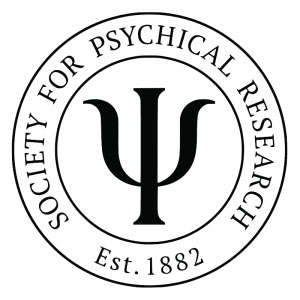
Society for Psychical Research
Abbreviation SPR
Formation 1882; 137 years ago
Legal status Non-profit organisation
Purpose Parapsychology
Location
1 Vernon Mews, West Kensington, London W14 0RL
Region served
Worldwide
Membership
Psi researchers
President
Prof Chris Roe
Main organ
SPR Council
Website SPR
The Society for Psychical Research (SPR) is a nonprofit organisation in the United Kingdom. Its stated purpose is to understand events and abilities commonly described as psychic or paranormal. It describes itself as the "first society to conduct organised scholarly research into human experiences that challenge contemporary scientific models."[1] It does not, however, since its inception in 1882, hold any corporate opinions: SPR members assert a variety of beliefs with regard to the nature of the phenomena studied.[2]
Origins
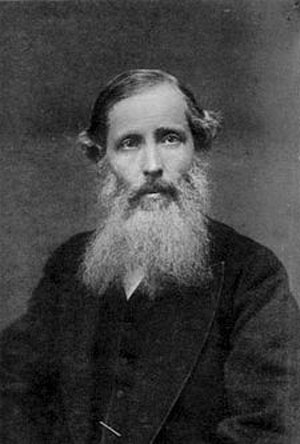
Henry Sidgwick, first president of the SPR
The Society for Psychical Research (SPR) originated from a discussion between journalist Edmund Rogers and the physicist William F. Barrett in autumn 1881. This led to a conference on the 5 and 6 January 1882 at the headquarters of the British National Association of Spiritualists which the foundation of the Society was proposed.[3] The committee included Barrett, Rogers, Stainton Moses, Charles Massey, Edmund Gurney, Hensleigh Wedgwood and Frederic W. H. Myers.[4] The SPR was formally constituted on the 20 February 1882 with philosopher Henry Sidgwick as its first president.[5][6][7]
The SPR was the first organisation of its kind in the world, its stated purpose being "to approach these varied problems without prejudice or prepossession of any kind, and in the same spirit of exact and unimpassioned enquiry which has enabled science to solve so many problems, once not less obscure nor less hotly debated."[8]
Other early members included the author Jane Barlow,[9] the renowned chemist Sir William Crookes, physicist Sir Oliver Lodge, Nobel laureate Charles Richet and psychologist William James.[10]
Members of the SPR initiated and organised the International Congresses of Physiological/Experimental psychology.[11][12]
Areas of study included hypnotism, dissociation, thought-transference, mediumship, Reichenbach phenomena, apparitions and haunted houses and the physical phenomena associated with séances.[11][13][14] The SPR were to introduce a number of neologisms which have entered the English language, such as 'telepathy', which was coined by Frederic Myers.[15]
The Society is run by a President and a Council of twenty members, and is open to interested members of the public to join. The organisation is based at 1 Vernon Mews, London, with a library and office open to members, and with large book and archival holdings in Cambridge University Library, Cambridgeshire, England.[16] It publishes the peer reviewed quarterly Journal of the Society for Psychical Research (JSPR), the irregular Proceedings and the magazine Paranormal Review. It holds an annual conference, regular lectures and two study days per year[1][17] and supports the LEXSCIEN on-line library project.[18]
Research
Psychical research
Among the first important works was the two-volume publication in 1886, Phantasms of the Living, concerning telepathy and apparitions, co-authored by Gurney, Myers and Frank Podmore.[19] This text, and subsequent research in this area, was received negatively by the scientific mainstream,[12] though Gurney and Podmore provided a defense of the society's early work in this area in mainstream publications.[20][21][22][23][24]
The SPR "devised methodological innovations such as randomized study designs" and conducted "the first experiments investigating the psychology of eyewitness testimony (Hodgson and Davey, 1887), [and] empirical and conceptual studies illuminating mechanisms of dissociation and hypnotism"[11]
In 1894, the Census of Hallucinations was published which sampled 17,000 people. Out of these, 1, 684 persons reported having experienced a hallucination of an apparition.[25] Such efforts were claimed to have undermined "the notion of dissociation and hallucinations as intrinsically pathological phenomena"[11]
The SPR investigated many spiritualist mediums such as Eva Carrière and Eusapia Palladino.[26]
During the early twentieth century, the SPR studied a series of automatic scripts and trance utterances from a group of automatic writers, known as the cross-correspondences.[27]
Famous cases investigated by the Society include Borley Rectory and the Enfield Poltergeist.
In 1912 the Society extended a request for a contribution to a special medical edition of its Proceedings to Sigmund Freud. Though according to Ronald W. Clark (1980) "Freud surmised, no doubt correctly, that the existence of any link between the founding fathers of psychoanalysis and investigation of the paranormal would hamper acceptance of psychoanalysis" as would any perceived involvement with the occult. Nonetheless, Freud did respond, contributing an essay titled "A Note on the Unconscious in Psycho-Analysis"[28] to the Medical Supplement to the Proceedings of the Society for Psychical Research.[29]
Exposures of fraud
Much of the early work involved investigating, exposing and in some cases duplicating fake phenomena. In the late 19th century, SPR investigations into séance phenomena led to the exposure of many fraudulent mediums.[30]
Richard Hodgson distinguished himself in that area. In 1884, Hodgson was sent by the SPR to India to investigate Helena Blavatsky and concluded that her claims of psychic power were fraudulent.[31]
In 1886 and 1887 a series of publications by S. J. Davey, Hodgson and Sidgwick in the SPR journal exposed the slate writing tricks of the medium William Eglinton.[32] Hodgson with his friend, S. J. Davey, had staged fake séances for educating the public (including SPR members). Davey gave sittings under an assumed name, duplicating the phenomena produced by Eglinton, and then proceeded to point out to the sitters the manner in which they had been deceived. Because of this, some spiritualist members such as Stainton Moses resigned from the SPR.[32]
In 1891, Alfred Russel Wallace requested for the Society to properly investigate spirit photography.[33] Eleanor Sidgwick responded with a critical paper in the SPR which cast doubt on the subject and discussed the fraudulent methods that spirit photographers such as Édouard Isidore Buguet, Frederic Hudson and William H. Mumler had utilised.[34]
Due to the exposure of William Hope and other fraudulent mediums, Arthur Conan Doyle led a mass resignation of eighty-four members of the Society for Psychical Research, as they believed the Society was opposed to spiritualism.[35] Science historian William Hodson Brock has noted that "By the 1900s most avowed spiritualists had left the SPR and gone back to the BNAS (the London Spiritualist Alliance since 1884), having become upset by the sceptical tone of most of the SPR's investigations."[36]
Criticism of the SPR
The Society has been criticised by both spiritualists and sceptics.
Criticism from spiritualists
Prominent spiritualists at first welcomed the SPR and cooperated fully. But relations soured when spiritualists discovered that the SPR would not accept outside testimony as proof, and the society accused some prominent mediums of fraud. Spiritualist Arthur Conan Doyle resigned from the SPR in 1930, to protest what he regarded as the SPR's overly restrictive standards of proof. Psychic investigator and believer in spiritualism Nandor Fodor criticised the SPR for its "strong bias" against physical manifestations of spiritualism.[37]
Criticism from sceptics
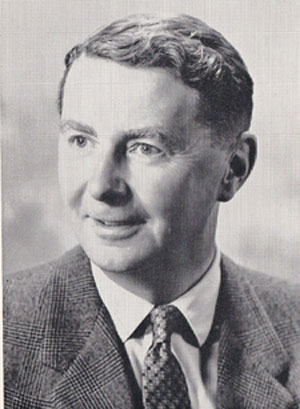
Trevor H. Hall, a critic of the SPR
Sceptics have criticised members of the SPR for having motives liable to impair scientific objectivity. According to SPR critics John Grant and Eric Dingwall (a member of the SPR), early SPR members such as Henry Sidgwick, Frederic W. H. Myers, and William Barrett hoped to cling to something spiritual through psychical research.[38][39] Myers stated that "[T]he Society for Psychical Research was founded, with the establishment of thought-transference--already rising within measurable distance of proof--as its primary aim."[40] Defenders of the SPR have stated in reply that "a ‘will to believe’ in post-mortem survival, telepathy and other scientifically unpopular notions, does not necessarily exclude a "will to know" and thus the capacity for thorough self-criticism, methodological rigour and relentless suspicion of errors."[41]
The sceptic and physicist Victor J. Stenger has written:
Ivor Lloyd Tuckett an author of an early sceptical work on psychical research wrote that although the SPR have collected some valuable work, most of its active members have "no training in psychology fitting them for their task, and have been the victims of pronounced bias, as sometimes they themselves have admitted."[43] Trevor H. Hall, an ex-member of the Society for Psychical Research, criticised SPR members as "credulous and obsessive wish... to believe." Hall also claimed SPR members "lack knowledge of deceptive methods."[44]
Writer Edward Clodd asserted that the SPR members William F. Barrett and Oliver Lodge had insufficient competence for the detection of fraud and suggested that their spiritualist beliefs were based on magical thinking and primitive superstition.[45] Clodd described the SPR as offering "barbaric spiritual philosophy", and characterised the language of SPR members as using such terms as "subliminal consciousness" and "telepathic energy," as a disguise for "bastard supernaturalism."[46]
A 2004 psychological study involving 174 members of the Society for Psychical Research completed a delusional ideation questionnaire and a deductive reasoning task. As predicted, the study showed that "individuals who reported a strong belief in the paranormal made more errors and displayed more delusional ideation than sceptical individuals". There was also a reasoning bias which was limited to people who reported a belief in, rather than experience of, paranormal phenomena. The results suggested that reasoning abnormalities may have a causal role in the formation of paranormal belief.[47]
Some sceptical members have resigned from the SPR. Eric Dingwall resigned and wrote " After sixty years' experience and personal acquaintance with most of the leading parapsychologists of that period I do not think I could name half a dozen whom I could call objective students who honestly wished to discover the truth. The great majority wanted to prove something or other: They wanted the phenomena into which they were inquiring to serve some purpose in supporting preconceived theories of their own."[38]
Presidents
The following is a list of presidents:
Society for Psychical Research
1882-1884 Henry Sidgwick (1838–1900), Professor, Trinity College, Cambridge; Philosopher and Economist
1885-1887 Balfour Stewart (1827–1887), Professor, Owenham College, Manchester; Physicist
1888-1892 Henry Sidgwick (→ 1882), Professor, Trinity College, Cambridge; Philosopher and Economist
1893 Arthur Balfour KG, OM, PC, DL (1848–1930), later Prime Minister, known for the Balfour Declaration
1894-1895 William James (1842–1910) Professor, Harvard University; American Psychologist, Philosopher and Physician
1896-1899 Sir William Crookes (1832–1919), Physical Chemist, discovered the element Thallium, invented the Crookes tube
1900 Frederic W. H. Myers (1843–1901), Fellow of Trinity College, Cambridge; Classicist and Philosopher
1901-1903 Sir Oliver Lodge (1851–1940), Professor, University College, Liverpool; Physicist and Mathematician, developer of wireless telegraphy
1904 William F. Barrett FRS (1845–1926), Professor, Royal College of Science, Dublin; Experimental Physicist
1905 Charles Richet (1850–1935), Professor, Collège de France, Paris; French Physiologist, Nobel Prize in Medicine/Physiology 1913
1906-1907 Gerald Balfour (1853–1945), Politician, brother of Arthur Balfour; Fellow of Trinity College, Cambridge
1908-1909 Eleanor Sidgwick (1845–1936), Principal, Newnham College, Cambridge; Physicist
1910 Henry Arthur Smith (1848–1922), Barrister-at-Law, Middle Temple, London; Lawyer and author of legal treatises
1911 Andrew Lang (1844–1912), Fellow, Merton College, Oxford; Classicist and writer on folklore, mythology, and religion
1912 William Boyd Carpenter KCVO (1841–1918), Pastoral Lecturer, Theology, Cambridge; Bishop of Ripon
1913 Henri Bergson (1859–1941) Professor, Collège de France, Paris; Chair of Modern Philosophy; Nobel Prize, Literature 1927
1914 F. C. S. Schiller (1864–1937), Fellow, Corpus Christi College, Oxford; Philosopher
1915-1916 Gilbert Murray (1866–1957), Regius Professor of Greek, University of Oxford; Classicist
1917-1918 Lawrence Pearsall Jacks (1860–1955), Professor, Manchester College, Oxford; Philosopher and Theologian
1919 John William Strutt, 3rd Baron Rayleigh OM, PRS (1842–1919), Cavendish Professor, Trinity College, Cambridge; Physicist, Nobel Prize, Physics 1904
1920-1921 William McDougall FRS (1871–1938), Professor, Duke University; Psychologist, founder J B Rhine Parapsychology Lab
1922 Thomas Walker Mitchell (1869–1944), Physician and Psychologist, Publisher of the British Journal of Medical Psychology 1920-1935
1923 Camille Flammarion (1842–1925), founder and first president of the Société Astronomique de France, author of popular science and science fiction works
1924-1925 John George Piddington (1869–1952), Businessman, John George Smith & Co., London
1926-1927 Hans Driesch (1867–1941), Professor, Universitaet Leipzig; German Biologist and Natural Philosopher, performed first animal cloning 1885
1928-1929 Sir Lawrence Evelyn Jones (1885–1955) Honorary Fellow, Balliol College, Oxford; Author
1930-1931 Walter Franklin Prince (1863–1934), Clergyman
1932 Eleanor Sidgwick (→ 1908) and Oliver Lodge (→ 1901)
1933-1934 Edith Lyttelton (born as Edith Balfour; 1865–1948), Writer
1935-1936 C. D. Broad (1887–1971), Philosopher
1937-1938 Robert Strutt, 4th Baron Rayleigh (1875–1947), Physicist
1939-1941 H. H. Price (1899–1984), Philosopher
1942-1944 Robert Henry Thouless (1894–1984), Psychologist
1945-1946 George Nugent Merle Tyrrell (1879–1952), Mathematician
1947-1948 William Henry Salter (1880–1969), Lawyer
1949 Gardner Murphy (1895–1979), Director of Research, Menninger Foundation, Topeka, Kansas; Psychologist
1950-1951 Samuel Soal (1889–1975), Mathematician
1952 Gilbert Murray (→ 1915)
1953-1955 F. J. M. Stratton (1881–1960), Astrophysicist, Professor in Cambridge University
1956-1958 Guy William Lambert (1889–1984), Diplomat
1958-1960 C. D. Broad (→ 1935)
1960-1961 H. H. Price (→ 1939)
1960-1963 E. R. Dodds (1893–1979), Hellenist, Professor in Birmingham and Oxford
1963-1965 Donald J. West (born 1924), Psychiatrist and criminologist
1965-1969 Sir Alister Hardy (1896–1985), Zoologist
1969-1971 W. A. H. Rushton (1901–1980), Physiologist, Professor in Cambridge
1971-1974 Clement Mundle (1916–1989), Philosopher
1974-1976 John Beloff (1920–2006), Psychologist at the University of Edinburgh
1976-1979 Arthur J. Ellison (1920–2000), Engineer
1980 Joseph Banks Rhine (1895–1980), Biologist and Parapsychologist
1980 Louisa Ella Rhine (1891–1983), Parapsychologist, wife of Joseph Rhine
1981-1983 Arthur J. Ellison (→ 1976)
1984-1988 Donald J. West (→ 1963)
1988-1989 Ian Stevenson (1918–2007), Psychiatrist
1992-1993 Alan Gauld (born 1932), Psychologist
1993-1995 Archie Roy (1924–2012), Professor of Astronomy in Glasgow, founded the Scottish SPR in 1987
1995-1998 David Fontana (1934–2010), Professor of Psychology in Cardiff
1998-1999 Donald J. West (→ 1963, → 1984)
2000-2004 Bernard Carr, Professor of Mathematics and Astronomy in London
2004-2007 John Poynton, Professor Emeritus of Biology, University of Natal
2007-2011 Deborah Delanoy, Parapsychologist
2011-2015 Richard S. Broughton, senior lecturer in psychology at The University of Northampton, UK
2015-2018 John Poynton (→2004)
2018- Chris Roe, Professor of Psychology, University of Northampton
Publications
The Society publishes Proceedings of the Society for Psychical Research, the Journal of the Society for Psychical Research, and the Paranormal Review, as well as the online Psi Encyclopedia.[48][49][50]
Proceedings of the Society for Psychical Research
First published in 1882 as a public record of the activities of the SPR, the Proceedings are now reserved for longer pieces of work, such as Presidential Addresses, and are only occasionally published.[51] The current editor is Dr David Vernon.
Journal of the Society for Psychical Research
The Journal of the Society for Psychical Research has been published quarterly since 1884. It was introduced as a private, members-only periodical to supplement the Proceedings.[51] It now focuses on current laboratory and field research, but also includes theoretical, methodological and historical papers on parapsychology. It also publishes book reviews and correspondence. The current editor is Dr David Vernon.
Paranormal Review
The Paranormal Review is the magazine of the Society for Psychical Research. Formerly known as the Psi Researcher, it has been published since 1996. Previous editors have included Dr Nicola J. Holt.[52] The current editor is Dr Leo Ruickbie.[49]
Other societies
A number of other psychical research organisations use the term 'Society for Psychical Research' in their name.
• Australia - In 1977 the Australian Institute of Parapsychological Research was founded.[53]
• Austria - Founded in 1927 as the Austrian Society for Psychical Research, today the Austrian Society for Parapsychology.[54]
• Canada - From 1908 to 1916 the Canadian Society for Psychical Research existed in Toronto.[55]
• Denmark - Selskabet for Psykisk Forskning (The Danish Society for Psychical Research) was founded in 1905.[56]
• Finland - Sällskapet för Psykisk Forskning (The Finnish Society for Psychical Research) was formed in 1907 by Arvi Grotenfelt as a first chairman, and the society existed until 2002. A splinter group for Finnish speaking people, Suomen parapsykologinen tutkimusseura (Parapsychological research society of Finland), still exists today.
• France - In 1885, a society called the Société de Psychologie Physiologique (Society for Physiological Psychology) was formed by Charles Richet, Théodule-Armand Ribot and Léon Marillier. It existed until 1890 when it was abandoned due to lack of interest.[57][58]
• Iceland - Sálarrannsóknarfélag Íslands (Icelandic Society for Psychical Research) was formed in 1918. It has a predecessor called the Experimental Society, which was founded in 1905.[59][60]
• Netherlands - The Studievereniging voor Psychical Research (Dutch for Society for Psychical Research) was founded in 1917.[61]
• Poland - The Polish Society for Psychical Research was very active before the second world war.[62]
• Scotland - The Scottish Society for Psychical Research is active today.[63]
• Sweden - Sällskapet för Parapsykologisk Forskning (the Swedish Society for Parapsychological Research) was founded in 1948.[64]
• USA - An American branch of the Society was formed as the American Society for Psychical Research (ASPR) in 1885, which became independent in 1906.[65] A splinter group, the Boston Society for Psychical Research existed from May 1925 to 1941.[66]
See also
• American Society for Psychical Research
• Institut suisse des sciences noétiques
• List of parapsychology topics
References
1. "SPR website". spr.ac.uk. Archived from the original on 17 February 2010. Retrieved 23 March 2018.
2. "Join the SPR!". Society for Psychical Research. Membership does not imply acceptance of any particular opinion concerning the nature or reality of the phenomena examined, and the Society holds no corporate views.
3. Oppenheim, Janet. (1988). The Other World: Spiritualism and Psychical Research in England, 1850-1914. pp. 136-138. ISBN 978-0521347679
4. Luckhurst, Roger. (2002). The Invention of Telepathy, 1870-1901. Oxford University Press. p. 51. ISBN 978-0199249626
5. Schultz, Bart. (2004). Henry Sidgwick: Eye of the Universe: An Intellectual Biography. Cambridge University Press. p. 276. ISBN 978-0521829670
6. McCorristine, Shane. (2010). Spectres of the Self: Thinking about Ghosts and Ghost-Seeing in England, 1750–1920. Cambridge University Press. p. 110. ISBN 978-0521747967
7. Alan Gauld, The Founders of Psychical Research (London: Routledge & Kegan Paul, 1968), p. 138.
8. Grattan-Guinness, Ivor. (1982). Psychical Research: A Guide to Its History, Principles and Practices: In Celebration of 100 Years of the Society for Psychical Research. Aquarian Press. p. 19. ISBN 0-85030-316-8.
9. "Meetings of the Council". Journal of the Society for Psychical Research. 18(335): 12. 1917.
10. Christie, Drew. Societies for Psychical Research. In Michael Shermer. (2002). The Skeptic Encyclopedia of Pseudoscience. ABC-CLIO. pp. 217-219. ISBN 1-57607-653-9
11. Sommer, Andreas (2012). "Psychical research and the origins of American psychology: Hugo Münsterberg, William James and Eusapia Palladino". History of the Human Sciences. 25 (2): 23–44. doi:10.1177/0952695112439376. PMC 3552602. PMID 23355763.
12. Sommer, Andreas (2011). "Professional Heresy: Edmund Gurney (1847–88) and the Study of Hallucinations and Hypnotism". Medical History. 55 (3): 383–388. doi:10.1017/S0025727300005445. PMC 3143882. PMID 21792265. Retrieved 17 December 2016.
13. Thurschwell, Pamela. (2004). Literature, Technology and Magical Thinking, 1880–1920. Cambridge University Press. p. 16. ISBN 0-521-80168-0
14. McCorristine, Shane. (2010). Spectres of the Self: Thinking about Ghosts and Ghost-Seeing in England, 1750-1920. Cambridge University Press. p. 114. ISBN 978-0-521-76798-9
15. "Online Etymology Dictionary". Etymonline.com. Retrieved 10 September2011.
16. "Rare Books - Collections directory - name access". http://www.lib.cam.ac.uk. Retrieved 23 March 2018.
17. "Edinburgh University Website". ed.ac.uk. Archived from the original on 3 March 2007. Retrieved 23 March 2018.
18. "LEXSCIEN Library of Exploratory Science". Lexscien.org. Retrieved 10 September 2011.
19. Oppenheim, Janet. (1988). The Other World: Spiritualism and Psychical Research in England, 1850-1914. pp. 141-142. ISBN 978-0521347679
20. Gurney, Edmund. (1887). Thought-transference. Science, 233-235.
21. Gurney, Edmund. (1887). Thought-transference. National Review, 9, 437-439
22. Gurney, Edmund. (1888). Hallucination of memory and ‘telepathy’. Mind, 13, 415-417.
23. Podmore, Frank. (1892). IN DEFENCE OF PHANTASMS. The National Review. Vol. 19, No. 110. pp. 234-251
24. Podmore, Frank. (1895). What Psychical Research Has Accomplished. The North American Review. Vol. 160, No. 460. pp. 331-344
25. Williams, William F. (2000). Encyclopedia of Pseudoscience: From Alien Abductions to Zone Therapy. Routledge. p. 49. ISBN 1-57958-207-9
26. Anderson, Rodger. (2006). Psychics, Sensitives and Somnambules: A Biographical Dictionary with Bibliographies. McFarland & Company. pp. 14-132. ISBN 978-0786427703
27. Edmunds, Simeon. (1966). Spiritualism: A Critical Survey. Aquarian Press. pp. 178-180. ISBN 978-0850300130
28. 1912 Proceedings of the Society for Psychical Research, 26 (Part 66), 312-18.
29. Keeley, James P. "Subliminal Promptings: Psychoanalytic Theory and the Society for Psychical Research." American Imago, vol. 58 no. 4, 2001, pp. 767-791. Project MUSE, doi:10.1353/aim.2001.0021
30. Moreman, Christopher M. (2010). Beyond the Threshold: Afterlife Beliefs and Experiences in World Religions. Rowman & Littlefield Publishers, Inc. p. 163. ISBN 978-0-7425-6228-8 "SPR investigators quickly found that many mediums were indeed, as skeptics had alleged, operating under cover of darkness in order to perpetrate scams. They used a number of tricks facilitated by darkness: sleight of hand was used to manipulate objects and touch people eager to make contact with deceased loved ones; flour or white lines would give the illusion of spectral white hands or faces; accomplices were even stashed under tables or in secret rooms to lent support in the plot... As the investigations of the SPR, and other skeptics, were made public, many fraudulent mediums saw their careers ruined and many unsuspecting clients were enraged at the deception perpetrated."
31. Oppenheim, Janet. (1988). The Other World: Spiritualism and Psychical Research in England, 1850-1914. pp. 175-176. ISBN 978-0521347679
32. Oppenheim, Janet. (1988). The Other World: Spiritualism and Psychical Research in England, 1850-1914. Cambridge University Press. pp. 139-140. ISBN 978-0521347679
33. "The Belief in Spirit Photography". Martyn Jolly.
34. Edmunds, Simeon. (1966). Spiritualism: A Critical Survey. Aquarian Press. p. 115. ISBN 978-0850300130 "The early history of spirit photography was reviewed by Mrs Henry Sidgwick in the Proceedings of the SPR in 1891. She showed clearly not only that Mumler, Hudson, Buguet and their ilk were fraudulent, but the way in which those who believed in them were deceived."
35. Nelson, G. K. (2013). Spiritualism and Society. Routledge. p. 159. ISBN 978-0415714624
36. Brock, William Hodson. (2008). William Crookes (1832–1919) and the Commercialization of Science. Ashgate Publishing. p. 206. ISBN 978-0754663225
37. Nandor Fodor, An Encyclopedia of Psychic Science (Secaucus, N.J.: Citadel, 1966) 350-352.
38. Dingwall, Eric. (1985). The Need for Responsibility in Parapsychology: My Sixty Years in Psychical Research. In Paul Kurtz. A Skeptic's Handbook of Parapsychology. Prometheus Books. pp. 161-174. ISBN 0-87975-300-5 Author John Grant stated that prominent member F. W. H. Myers held that telepathy, according to some speculative explanations, might, in demonstrating that mind could communicate with mind apart from recognised channels, provide evidence supporting the proposition that human personality could continue after the death of the body. "Thus the supernatural might be proved by science, and psychical research might become, in the words of Sir William Barrett, a handmaid to religion."
39. Grant, John. (2015). Spooky Science: Debunking the Pseudoscience of the Afterlife. Sterling Publishing. pp. 23-24. ISBN 978-1-4549-1654-3
40. Woerlee, G. M. (2011). "Review of Consciousness Beyond Life by Pim van Lommel". Retrieved 2016-12-19.
41. Sommer, Andreas (2011). "HamiltonTrevor, Immortal Longings: F.W.H. Myers and the Victorian Search for Life after Death (Exeter: Imprint Academic, 2009), pp. 359, £19.95, hardback". Medical History. 55 (3): 433–435. doi:10.1017/S0025727300005597. ISBN 978-1845-401238. Retrieved 17 December 2016.
42. Stenger, Victor J. (1990). Physics and Psychics: The Search for a World Beyond the Senses. Prometheus Books. pp. 161-162. ISBN 978-0-87975-575-1
43. Tuckett, Ivor Lloyd. (1911). The Evidence for the Supernatural: A Critical Study Made with "Uncommon Sense". K. Paul, Trench, Trübner. pp. 8-9
44. Spangenburg, Ray; Moser, Diane. (2004). The Age of Synthesis: 1800-1895. Facts on File. p. 134. ISBN 978-0816048533
45. Clodd, Edward. (1917). The Question: A Brief History and Examination of Modern Spiritualism. Grant Richards, London. pp. 265-301
46. Luckhurst, Roger. (2002). The Invention of Telepathy: 1870-1901. Oxford University Press. p. 163. ISBN 978-0199249626
47. Lawrence, E., & Peters, E. (2004). Reasoning in believers in the paranormal. Journal of Nervous & Mental Disease, 192, 727–733.
48. https://www.spr.ac.uk/publications/jour ... l-research, accessed 19 October 2017.
49. https://www.spr.ac.uk/publications/paranormal-review, accessed 19 October 2017.
50. https://www.spr.ac.uk/publications/psi-encyclopedia, accessed 19 October 2017.
51. http://www.iapsop.com/archive/materials ... oceedings/, accessed 19 October 2017.
52. http://people.uwe.ac.uk/Pages/person.as ... s%5Cn-holt, accessed 19 October 2017.
53. Australian Institute of Parapsychological Research http://www.aiprinc.org/
54. Peter Mulacz. "Austrian Society for Parapsychology". Parapsychologie.ac.at. Retrieved 10 September 2011.
55. [McMullin, Stan (2004) Anatomy of a Séance: A History of Spirit Communication in Central Canada (Montreal & Kingston: McGill-Queen’s University Press), p. 87.]
56. "Selskabet for Psykisk Forskning". http://www.parapsykologi.dk. Retrieved 23 March 2018.
57. "La lumière sur " L'ombre des autres "". Metapsychique.org. Archived from the original on 8 November 2007. Retrieved 10 September 2011.
58. Richet, Charles. Traité de Métapsychique. Bruxelles: Artha Production, 1994, p.63. ISBN 2-930111-00-3
59. "Sálarrannsóknarfélag Íslands". Icelandic Society for Psychical Research. Retrieved 5 February 2015.
60. Gissurarson, Loftur Reimar; Haralsson, Erlendur. "History of Parapsychology in Iceland" (PDF). International Journal of Parapsychology. 12 (1): 29–50.
61. "Parapsychologie in Nederland (Dutch website)". Parapsy.nl. Retrieved 10 September 2011.
62. [Barrington, Stevenson and Weaver, (2005) A World in a Grain of Sand: The Clairvoyance of Stefan Ossowiecki, Jefferson, NC, and London, McFarland, ISBN 0-7864-2112-6]
63. "sspr". sspr. Retrieved 23 March 2018.
64. "Archived copy". Archived from the original on 10 June 2003. Retrieved 2 March 2010.
65. "American Society for Psychical Research". http://www.aspr.com. Retrieved 23 March 2018.
66. Berger, Arthur S., and Joyce Berger. The Encyclopedia of Parapsychology and Psychical Research. New York: Paragon House, 1991.
Further reading
SPR histories
• Bennett, Edward T. (1903). The Society for Psychical Research: Its Rise & Progress & A Sketch of its Work. London: R. Brimley Johnson.
• Gauld, Alan. (1968). The Founders of Psychical Research. Routledge & Kegan Paul. ISBN 978-0710060679
• Haynes, Renee. (1982). The Society for Psychical Research 1882-1982: A History. London: MacDonald & Co. ISBN 978-0356078755
• Salter, William Henry. (1948). The Society for Psychical Research: An Outline of its History. Society for Psychical Research.
Scholarly studies
• Cerullo, John. (1982). Secularization of the Soul: Psychical Research in Modern Britain. Philadelphia: Institute for the Study of Human Issues. ISBN 978-0897270281
• Luckhurst, Roger. (2002). The Invention of Telepathy, 1870-1901. Oxford University Press. ISBN 978-0199249626
• McCorristine, Shane. (2010). Spectres of the Self: Thinking about Ghosts and Ghost-Seeing in England, 1750-1920. Cambridge University Press. ISBN 978-0521747967
• Oppenheim, Janet. (1988). The Other World: Spiritualism and Psychical Research in England, 1850-1914. Cambridge University Press. ISBN 978-0521347679
Criticism
• McCabe, Joseph. (1920). Scientific Men and Spiritualism: A Skeptic's Analysis. The Living Age. June 12. pp. 652–657. A sceptical look at SPR members who had supported Spiritualism, concludes they were duped by fraudulent mediums.
• Brandon, Ruth. (1983). The Spiritualists: The Passion for the Occult in the Nineteenth and Twentieth Centuries. Alfred A. Knopf. ISBN 978-0394527406
• Hyman, Ray. (1989). The Elusive Quarry: A Scientific Appraisal of Psychical Research. Prometheus Books. ISBN 978-0879755041
External links
• SPR home page
by Wikipedia
Accessed: 4/26/19
NOTICE: THIS WORK MAY BE PROTECTED BY COPYRIGHT
YOU ARE REQUIRED TO READ THE COPYRIGHT NOTICE AT THIS LINK BEFORE YOU READ THE FOLLOWING WORK, THAT IS AVAILABLE SOLELY FOR PRIVATE STUDY, SCHOLARSHIP OR RESEARCH PURSUANT TO 17 U.S.C. SECTION 107 AND 108. IN THE EVENT THAT THE LIBRARY DETERMINES THAT UNLAWFUL COPYING OF THIS WORK HAS OCCURRED, THE LIBRARY HAS THE RIGHT TO BLOCK THE I.P. ADDRESS AT WHICH THE UNLAWFUL COPYING APPEARED TO HAVE OCCURRED. THANK YOU FOR RESPECTING THE RIGHTS OF COPYRIGHT OWNERS.
The second generation of the Cecil Bloc was famous at the time that it was growing up (and political power was still in the hands of the first generation) as "The Souls," a term applied to them partly in derision and partly in envy but used by themselves later. This group, flitting about from one great country house to another or from one spectacular social event to another in the town houses of their elders, has been preserved for posterity in the autobiographical volumes of Margot Tennant Asquith and has been caricatured in the writings of Oscar Wilde. The frivolity of this group can be seen in Margot Tennant's statement that she obtained for Milner his appointment to the chairmanship of the Board of Inland Revenue in 1892 merely by writing to Balfour and asking for it after she had a too brief romantic interlude with Milner in Egypt. As a respected scholar of my acquaintance has said, this group did everything in a frivolous fashion, including entering the Boer War and the First World War.
One of the enduring creations of the Cecil Bloc is the Society for Psychical Research, which holds a position in the history of the Cecil Bloc similar to that held by the Royal Institute of International Affairs in the Milner Group. The Society was founded in 1882 by the Balfour family and their in-laws, Lord Rayleigh and Professor Sidgwick. In the twentieth century it was dominated by those members of the Cecil Bloc who became most readily members of the Milner Group. Among these we might mention Gilbert Murray, who performed a notable series of experiments with his daughter, Mrs. Arnold J. Toynbee, in the years before 1914, and Dame Edith Lyttelton, herself a Balfour and widow of Arthur Balfour's closest friend, who was president of the Society in 1933-1934.
-- The Anglo-American Establishment: From Rhodes to Cliveden, by Carroll Quigley

Society for Psychical Research
Abbreviation SPR
Formation 1882; 137 years ago
Legal status Non-profit organisation
Purpose Parapsychology
Location
1 Vernon Mews, West Kensington, London W14 0RL
Region served
Worldwide
Membership
Psi researchers
President
Prof Chris Roe
Main organ
SPR Council
Website SPR
The Society for Psychical Research (SPR) is a nonprofit organisation in the United Kingdom. Its stated purpose is to understand events and abilities commonly described as psychic or paranormal. It describes itself as the "first society to conduct organised scholarly research into human experiences that challenge contemporary scientific models."[1] It does not, however, since its inception in 1882, hold any corporate opinions: SPR members assert a variety of beliefs with regard to the nature of the phenomena studied.[2]
Origins

Henry Sidgwick, first president of the SPR
The Society for Psychical Research (SPR) originated from a discussion between journalist Edmund Rogers and the physicist William F. Barrett in autumn 1881. This led to a conference on the 5 and 6 January 1882 at the headquarters of the British National Association of Spiritualists which the foundation of the Society was proposed.[3] The committee included Barrett, Rogers, Stainton Moses, Charles Massey, Edmund Gurney, Hensleigh Wedgwood and Frederic W. H. Myers.[4] The SPR was formally constituted on the 20 February 1882 with philosopher Henry Sidgwick as its first president.[5][6][7]
The SPR was the first organisation of its kind in the world, its stated purpose being "to approach these varied problems without prejudice or prepossession of any kind, and in the same spirit of exact and unimpassioned enquiry which has enabled science to solve so many problems, once not less obscure nor less hotly debated."[8]
Other early members included the author Jane Barlow,[9] the renowned chemist Sir William Crookes, physicist Sir Oliver Lodge, Nobel laureate Charles Richet and psychologist William James.[10]
Members of the SPR initiated and organised the International Congresses of Physiological/Experimental psychology.[11][12]
Areas of study included hypnotism, dissociation, thought-transference, mediumship, Reichenbach phenomena, apparitions and haunted houses and the physical phenomena associated with séances.[11][13][14] The SPR were to introduce a number of neologisms which have entered the English language, such as 'telepathy', which was coined by Frederic Myers.[15]
The Society is run by a President and a Council of twenty members, and is open to interested members of the public to join. The organisation is based at 1 Vernon Mews, London, with a library and office open to members, and with large book and archival holdings in Cambridge University Library, Cambridgeshire, England.[16] It publishes the peer reviewed quarterly Journal of the Society for Psychical Research (JSPR), the irregular Proceedings and the magazine Paranormal Review. It holds an annual conference, regular lectures and two study days per year[1][17] and supports the LEXSCIEN on-line library project.[18]
Research
Psychical research
Among the first important works was the two-volume publication in 1886, Phantasms of the Living, concerning telepathy and apparitions, co-authored by Gurney, Myers and Frank Podmore.[19] This text, and subsequent research in this area, was received negatively by the scientific mainstream,[12] though Gurney and Podmore provided a defense of the society's early work in this area in mainstream publications.[20][21][22][23][24]
The SPR "devised methodological innovations such as randomized study designs" and conducted "the first experiments investigating the psychology of eyewitness testimony (Hodgson and Davey, 1887), [and] empirical and conceptual studies illuminating mechanisms of dissociation and hypnotism"[11]
In 1894, the Census of Hallucinations was published which sampled 17,000 people. Out of these, 1, 684 persons reported having experienced a hallucination of an apparition.[25] Such efforts were claimed to have undermined "the notion of dissociation and hallucinations as intrinsically pathological phenomena"[11]
The SPR investigated many spiritualist mediums such as Eva Carrière and Eusapia Palladino.[26]
During the early twentieth century, the SPR studied a series of automatic scripts and trance utterances from a group of automatic writers, known as the cross-correspondences.[27]
Famous cases investigated by the Society include Borley Rectory and the Enfield Poltergeist.
In 1912 the Society extended a request for a contribution to a special medical edition of its Proceedings to Sigmund Freud. Though according to Ronald W. Clark (1980) "Freud surmised, no doubt correctly, that the existence of any link between the founding fathers of psychoanalysis and investigation of the paranormal would hamper acceptance of psychoanalysis" as would any perceived involvement with the occult. Nonetheless, Freud did respond, contributing an essay titled "A Note on the Unconscious in Psycho-Analysis"[28] to the Medical Supplement to the Proceedings of the Society for Psychical Research.[29]
Exposures of fraud
Much of the early work involved investigating, exposing and in some cases duplicating fake phenomena. In the late 19th century, SPR investigations into séance phenomena led to the exposure of many fraudulent mediums.[30]
Richard Hodgson distinguished himself in that area. In 1884, Hodgson was sent by the SPR to India to investigate Helena Blavatsky and concluded that her claims of psychic power were fraudulent.[31]
In 1886 and 1887 a series of publications by S. J. Davey, Hodgson and Sidgwick in the SPR journal exposed the slate writing tricks of the medium William Eglinton.[32] Hodgson with his friend, S. J. Davey, had staged fake séances for educating the public (including SPR members). Davey gave sittings under an assumed name, duplicating the phenomena produced by Eglinton, and then proceeded to point out to the sitters the manner in which they had been deceived. Because of this, some spiritualist members such as Stainton Moses resigned from the SPR.[32]
In 1891, Alfred Russel Wallace requested for the Society to properly investigate spirit photography.[33] Eleanor Sidgwick responded with a critical paper in the SPR which cast doubt on the subject and discussed the fraudulent methods that spirit photographers such as Édouard Isidore Buguet, Frederic Hudson and William H. Mumler had utilised.[34]
Due to the exposure of William Hope and other fraudulent mediums, Arthur Conan Doyle led a mass resignation of eighty-four members of the Society for Psychical Research, as they believed the Society was opposed to spiritualism.[35] Science historian William Hodson Brock has noted that "By the 1900s most avowed spiritualists had left the SPR and gone back to the BNAS (the London Spiritualist Alliance since 1884), having become upset by the sceptical tone of most of the SPR's investigations."[36]
Criticism of the SPR
The Society has been criticised by both spiritualists and sceptics.
Criticism from spiritualists
Prominent spiritualists at first welcomed the SPR and cooperated fully. But relations soured when spiritualists discovered that the SPR would not accept outside testimony as proof, and the society accused some prominent mediums of fraud. Spiritualist Arthur Conan Doyle resigned from the SPR in 1930, to protest what he regarded as the SPR's overly restrictive standards of proof. Psychic investigator and believer in spiritualism Nandor Fodor criticised the SPR for its "strong bias" against physical manifestations of spiritualism.[37]
Criticism from sceptics

Trevor H. Hall, a critic of the SPR
Sceptics have criticised members of the SPR for having motives liable to impair scientific objectivity. According to SPR critics John Grant and Eric Dingwall (a member of the SPR), early SPR members such as Henry Sidgwick, Frederic W. H. Myers, and William Barrett hoped to cling to something spiritual through psychical research.[38][39] Myers stated that "[T]he Society for Psychical Research was founded, with the establishment of thought-transference--already rising within measurable distance of proof--as its primary aim."[40] Defenders of the SPR have stated in reply that "a ‘will to believe’ in post-mortem survival, telepathy and other scientifically unpopular notions, does not necessarily exclude a "will to know" and thus the capacity for thorough self-criticism, methodological rigour and relentless suspicion of errors."[41]
The sceptic and physicist Victor J. Stenger has written:
The SPR ... on occasion exposed blatant cases of fraud even their own credulous memberships could not swallow. But their journals have never succeeded in achieving a high level of credibility in the eyes of the rest of the scientific community. ... most articles usually begin with the assumption that psychic phenomena are demonstrated realities.[42]
Ivor Lloyd Tuckett an author of an early sceptical work on psychical research wrote that although the SPR have collected some valuable work, most of its active members have "no training in psychology fitting them for their task, and have been the victims of pronounced bias, as sometimes they themselves have admitted."[43] Trevor H. Hall, an ex-member of the Society for Psychical Research, criticised SPR members as "credulous and obsessive wish... to believe." Hall also claimed SPR members "lack knowledge of deceptive methods."[44]
Writer Edward Clodd asserted that the SPR members William F. Barrett and Oliver Lodge had insufficient competence for the detection of fraud and suggested that their spiritualist beliefs were based on magical thinking and primitive superstition.[45] Clodd described the SPR as offering "barbaric spiritual philosophy", and characterised the language of SPR members as using such terms as "subliminal consciousness" and "telepathic energy," as a disguise for "bastard supernaturalism."[46]
A 2004 psychological study involving 174 members of the Society for Psychical Research completed a delusional ideation questionnaire and a deductive reasoning task. As predicted, the study showed that "individuals who reported a strong belief in the paranormal made more errors and displayed more delusional ideation than sceptical individuals". There was also a reasoning bias which was limited to people who reported a belief in, rather than experience of, paranormal phenomena. The results suggested that reasoning abnormalities may have a causal role in the formation of paranormal belief.[47]
Some sceptical members have resigned from the SPR. Eric Dingwall resigned and wrote " After sixty years' experience and personal acquaintance with most of the leading parapsychologists of that period I do not think I could name half a dozen whom I could call objective students who honestly wished to discover the truth. The great majority wanted to prove something or other: They wanted the phenomena into which they were inquiring to serve some purpose in supporting preconceived theories of their own."[38]
Presidents
The following is a list of presidents:
Society for Psychical Research
1882-1884 Henry Sidgwick (1838–1900), Professor, Trinity College, Cambridge; Philosopher and Economist
1885-1887 Balfour Stewart (1827–1887), Professor, Owenham College, Manchester; Physicist
1888-1892 Henry Sidgwick (→ 1882), Professor, Trinity College, Cambridge; Philosopher and Economist
1893 Arthur Balfour KG, OM, PC, DL (1848–1930), later Prime Minister, known for the Balfour Declaration
1894-1895 William James (1842–1910) Professor, Harvard University; American Psychologist, Philosopher and Physician
1896-1899 Sir William Crookes (1832–1919), Physical Chemist, discovered the element Thallium, invented the Crookes tube
1900 Frederic W. H. Myers (1843–1901), Fellow of Trinity College, Cambridge; Classicist and Philosopher
1901-1903 Sir Oliver Lodge (1851–1940), Professor, University College, Liverpool; Physicist and Mathematician, developer of wireless telegraphy
1904 William F. Barrett FRS (1845–1926), Professor, Royal College of Science, Dublin; Experimental Physicist
1905 Charles Richet (1850–1935), Professor, Collège de France, Paris; French Physiologist, Nobel Prize in Medicine/Physiology 1913
1906-1907 Gerald Balfour (1853–1945), Politician, brother of Arthur Balfour; Fellow of Trinity College, Cambridge
1908-1909 Eleanor Sidgwick (1845–1936), Principal, Newnham College, Cambridge; Physicist
1910 Henry Arthur Smith (1848–1922), Barrister-at-Law, Middle Temple, London; Lawyer and author of legal treatises
1911 Andrew Lang (1844–1912), Fellow, Merton College, Oxford; Classicist and writer on folklore, mythology, and religion
1912 William Boyd Carpenter KCVO (1841–1918), Pastoral Lecturer, Theology, Cambridge; Bishop of Ripon
1913 Henri Bergson (1859–1941) Professor, Collège de France, Paris; Chair of Modern Philosophy; Nobel Prize, Literature 1927
1914 F. C. S. Schiller (1864–1937), Fellow, Corpus Christi College, Oxford; Philosopher
1915-1916 Gilbert Murray (1866–1957), Regius Professor of Greek, University of Oxford; Classicist
1917-1918 Lawrence Pearsall Jacks (1860–1955), Professor, Manchester College, Oxford; Philosopher and Theologian
1919 John William Strutt, 3rd Baron Rayleigh OM, PRS (1842–1919), Cavendish Professor, Trinity College, Cambridge; Physicist, Nobel Prize, Physics 1904
1920-1921 William McDougall FRS (1871–1938), Professor, Duke University; Psychologist, founder J B Rhine Parapsychology Lab
1922 Thomas Walker Mitchell (1869–1944), Physician and Psychologist, Publisher of the British Journal of Medical Psychology 1920-1935
1923 Camille Flammarion (1842–1925), founder and first president of the Société Astronomique de France, author of popular science and science fiction works
1924-1925 John George Piddington (1869–1952), Businessman, John George Smith & Co., London
1926-1927 Hans Driesch (1867–1941), Professor, Universitaet Leipzig; German Biologist and Natural Philosopher, performed first animal cloning 1885
1928-1929 Sir Lawrence Evelyn Jones (1885–1955) Honorary Fellow, Balliol College, Oxford; Author
1930-1931 Walter Franklin Prince (1863–1934), Clergyman
1932 Eleanor Sidgwick (→ 1908) and Oliver Lodge (→ 1901)
1933-1934 Edith Lyttelton (born as Edith Balfour; 1865–1948), Writer
1935-1936 C. D. Broad (1887–1971), Philosopher
1937-1938 Robert Strutt, 4th Baron Rayleigh (1875–1947), Physicist
1939-1941 H. H. Price (1899–1984), Philosopher
1942-1944 Robert Henry Thouless (1894–1984), Psychologist
1945-1946 George Nugent Merle Tyrrell (1879–1952), Mathematician
1947-1948 William Henry Salter (1880–1969), Lawyer
1949 Gardner Murphy (1895–1979), Director of Research, Menninger Foundation, Topeka, Kansas; Psychologist
1950-1951 Samuel Soal (1889–1975), Mathematician
1952 Gilbert Murray (→ 1915)
1953-1955 F. J. M. Stratton (1881–1960), Astrophysicist, Professor in Cambridge University
1956-1958 Guy William Lambert (1889–1984), Diplomat
1958-1960 C. D. Broad (→ 1935)
1960-1961 H. H. Price (→ 1939)
1960-1963 E. R. Dodds (1893–1979), Hellenist, Professor in Birmingham and Oxford
1963-1965 Donald J. West (born 1924), Psychiatrist and criminologist
1965-1969 Sir Alister Hardy (1896–1985), Zoologist
1969-1971 W. A. H. Rushton (1901–1980), Physiologist, Professor in Cambridge
1971-1974 Clement Mundle (1916–1989), Philosopher
1974-1976 John Beloff (1920–2006), Psychologist at the University of Edinburgh
1976-1979 Arthur J. Ellison (1920–2000), Engineer
1980 Joseph Banks Rhine (1895–1980), Biologist and Parapsychologist
1980 Louisa Ella Rhine (1891–1983), Parapsychologist, wife of Joseph Rhine
1981-1983 Arthur J. Ellison (→ 1976)
1984-1988 Donald J. West (→ 1963)
1988-1989 Ian Stevenson (1918–2007), Psychiatrist
1992-1993 Alan Gauld (born 1932), Psychologist
1993-1995 Archie Roy (1924–2012), Professor of Astronomy in Glasgow, founded the Scottish SPR in 1987
1995-1998 David Fontana (1934–2010), Professor of Psychology in Cardiff
1998-1999 Donald J. West (→ 1963, → 1984)
2000-2004 Bernard Carr, Professor of Mathematics and Astronomy in London
2004-2007 John Poynton, Professor Emeritus of Biology, University of Natal
2007-2011 Deborah Delanoy, Parapsychologist
2011-2015 Richard S. Broughton, senior lecturer in psychology at The University of Northampton, UK
2015-2018 John Poynton (→2004)
2018- Chris Roe, Professor of Psychology, University of Northampton
Publications
The Society publishes Proceedings of the Society for Psychical Research, the Journal of the Society for Psychical Research, and the Paranormal Review, as well as the online Psi Encyclopedia.[48][49][50]
Proceedings of the Society for Psychical Research
First published in 1882 as a public record of the activities of the SPR, the Proceedings are now reserved for longer pieces of work, such as Presidential Addresses, and are only occasionally published.[51] The current editor is Dr David Vernon.
Journal of the Society for Psychical Research
The Journal of the Society for Psychical Research has been published quarterly since 1884. It was introduced as a private, members-only periodical to supplement the Proceedings.[51] It now focuses on current laboratory and field research, but also includes theoretical, methodological and historical papers on parapsychology. It also publishes book reviews and correspondence. The current editor is Dr David Vernon.
Paranormal Review
The Paranormal Review is the magazine of the Society for Psychical Research. Formerly known as the Psi Researcher, it has been published since 1996. Previous editors have included Dr Nicola J. Holt.[52] The current editor is Dr Leo Ruickbie.[49]
Other societies
A number of other psychical research organisations use the term 'Society for Psychical Research' in their name.
• Australia - In 1977 the Australian Institute of Parapsychological Research was founded.[53]
• Austria - Founded in 1927 as the Austrian Society for Psychical Research, today the Austrian Society for Parapsychology.[54]
• Canada - From 1908 to 1916 the Canadian Society for Psychical Research existed in Toronto.[55]
• Denmark - Selskabet for Psykisk Forskning (The Danish Society for Psychical Research) was founded in 1905.[56]
• Finland - Sällskapet för Psykisk Forskning (The Finnish Society for Psychical Research) was formed in 1907 by Arvi Grotenfelt as a first chairman, and the society existed until 2002. A splinter group for Finnish speaking people, Suomen parapsykologinen tutkimusseura (Parapsychological research society of Finland), still exists today.
• France - In 1885, a society called the Société de Psychologie Physiologique (Society for Physiological Psychology) was formed by Charles Richet, Théodule-Armand Ribot and Léon Marillier. It existed until 1890 when it was abandoned due to lack of interest.[57][58]
• Iceland - Sálarrannsóknarfélag Íslands (Icelandic Society for Psychical Research) was formed in 1918. It has a predecessor called the Experimental Society, which was founded in 1905.[59][60]
• Netherlands - The Studievereniging voor Psychical Research (Dutch for Society for Psychical Research) was founded in 1917.[61]
• Poland - The Polish Society for Psychical Research was very active before the second world war.[62]
• Scotland - The Scottish Society for Psychical Research is active today.[63]
• Sweden - Sällskapet för Parapsykologisk Forskning (the Swedish Society for Parapsychological Research) was founded in 1948.[64]
• USA - An American branch of the Society was formed as the American Society for Psychical Research (ASPR) in 1885, which became independent in 1906.[65] A splinter group, the Boston Society for Psychical Research existed from May 1925 to 1941.[66]
See also
• American Society for Psychical Research
• Institut suisse des sciences noétiques
• List of parapsychology topics
References
1. "SPR website". spr.ac.uk. Archived from the original on 17 February 2010. Retrieved 23 March 2018.
2. "Join the SPR!". Society for Psychical Research. Membership does not imply acceptance of any particular opinion concerning the nature or reality of the phenomena examined, and the Society holds no corporate views.
3. Oppenheim, Janet. (1988). The Other World: Spiritualism and Psychical Research in England, 1850-1914. pp. 136-138. ISBN 978-0521347679
4. Luckhurst, Roger. (2002). The Invention of Telepathy, 1870-1901. Oxford University Press. p. 51. ISBN 978-0199249626
5. Schultz, Bart. (2004). Henry Sidgwick: Eye of the Universe: An Intellectual Biography. Cambridge University Press. p. 276. ISBN 978-0521829670
6. McCorristine, Shane. (2010). Spectres of the Self: Thinking about Ghosts and Ghost-Seeing in England, 1750–1920. Cambridge University Press. p. 110. ISBN 978-0521747967
7. Alan Gauld, The Founders of Psychical Research (London: Routledge & Kegan Paul, 1968), p. 138.
8. Grattan-Guinness, Ivor. (1982). Psychical Research: A Guide to Its History, Principles and Practices: In Celebration of 100 Years of the Society for Psychical Research. Aquarian Press. p. 19. ISBN 0-85030-316-8.
9. "Meetings of the Council". Journal of the Society for Psychical Research. 18(335): 12. 1917.
10. Christie, Drew. Societies for Psychical Research. In Michael Shermer. (2002). The Skeptic Encyclopedia of Pseudoscience. ABC-CLIO. pp. 217-219. ISBN 1-57607-653-9
11. Sommer, Andreas (2012). "Psychical research and the origins of American psychology: Hugo Münsterberg, William James and Eusapia Palladino". History of the Human Sciences. 25 (2): 23–44. doi:10.1177/0952695112439376. PMC 3552602. PMID 23355763.
12. Sommer, Andreas (2011). "Professional Heresy: Edmund Gurney (1847–88) and the Study of Hallucinations and Hypnotism". Medical History. 55 (3): 383–388. doi:10.1017/S0025727300005445. PMC 3143882. PMID 21792265. Retrieved 17 December 2016.
13. Thurschwell, Pamela. (2004). Literature, Technology and Magical Thinking, 1880–1920. Cambridge University Press. p. 16. ISBN 0-521-80168-0
14. McCorristine, Shane. (2010). Spectres of the Self: Thinking about Ghosts and Ghost-Seeing in England, 1750-1920. Cambridge University Press. p. 114. ISBN 978-0-521-76798-9
15. "Online Etymology Dictionary". Etymonline.com. Retrieved 10 September2011.
16. "Rare Books - Collections directory - name access". http://www.lib.cam.ac.uk. Retrieved 23 March 2018.
17. "Edinburgh University Website". ed.ac.uk. Archived from the original on 3 March 2007. Retrieved 23 March 2018.
18. "LEXSCIEN Library of Exploratory Science". Lexscien.org. Retrieved 10 September 2011.
19. Oppenheim, Janet. (1988). The Other World: Spiritualism and Psychical Research in England, 1850-1914. pp. 141-142. ISBN 978-0521347679
20. Gurney, Edmund. (1887). Thought-transference. Science, 233-235.
21. Gurney, Edmund. (1887). Thought-transference. National Review, 9, 437-439
22. Gurney, Edmund. (1888). Hallucination of memory and ‘telepathy’. Mind, 13, 415-417.
23. Podmore, Frank. (1892). IN DEFENCE OF PHANTASMS. The National Review. Vol. 19, No. 110. pp. 234-251
24. Podmore, Frank. (1895). What Psychical Research Has Accomplished. The North American Review. Vol. 160, No. 460. pp. 331-344
25. Williams, William F. (2000). Encyclopedia of Pseudoscience: From Alien Abductions to Zone Therapy. Routledge. p. 49. ISBN 1-57958-207-9
26. Anderson, Rodger. (2006). Psychics, Sensitives and Somnambules: A Biographical Dictionary with Bibliographies. McFarland & Company. pp. 14-132. ISBN 978-0786427703
27. Edmunds, Simeon. (1966). Spiritualism: A Critical Survey. Aquarian Press. pp. 178-180. ISBN 978-0850300130
28. 1912 Proceedings of the Society for Psychical Research, 26 (Part 66), 312-18.
29. Keeley, James P. "Subliminal Promptings: Psychoanalytic Theory and the Society for Psychical Research." American Imago, vol. 58 no. 4, 2001, pp. 767-791. Project MUSE, doi:10.1353/aim.2001.0021
30. Moreman, Christopher M. (2010). Beyond the Threshold: Afterlife Beliefs and Experiences in World Religions. Rowman & Littlefield Publishers, Inc. p. 163. ISBN 978-0-7425-6228-8 "SPR investigators quickly found that many mediums were indeed, as skeptics had alleged, operating under cover of darkness in order to perpetrate scams. They used a number of tricks facilitated by darkness: sleight of hand was used to manipulate objects and touch people eager to make contact with deceased loved ones; flour or white lines would give the illusion of spectral white hands or faces; accomplices were even stashed under tables or in secret rooms to lent support in the plot... As the investigations of the SPR, and other skeptics, were made public, many fraudulent mediums saw their careers ruined and many unsuspecting clients were enraged at the deception perpetrated."
31. Oppenheim, Janet. (1988). The Other World: Spiritualism and Psychical Research in England, 1850-1914. pp. 175-176. ISBN 978-0521347679
32. Oppenheim, Janet. (1988). The Other World: Spiritualism and Psychical Research in England, 1850-1914. Cambridge University Press. pp. 139-140. ISBN 978-0521347679
33. "The Belief in Spirit Photography". Martyn Jolly.
34. Edmunds, Simeon. (1966). Spiritualism: A Critical Survey. Aquarian Press. p. 115. ISBN 978-0850300130 "The early history of spirit photography was reviewed by Mrs Henry Sidgwick in the Proceedings of the SPR in 1891. She showed clearly not only that Mumler, Hudson, Buguet and their ilk were fraudulent, but the way in which those who believed in them were deceived."
35. Nelson, G. K. (2013). Spiritualism and Society. Routledge. p. 159. ISBN 978-0415714624
36. Brock, William Hodson. (2008). William Crookes (1832–1919) and the Commercialization of Science. Ashgate Publishing. p. 206. ISBN 978-0754663225
37. Nandor Fodor, An Encyclopedia of Psychic Science (Secaucus, N.J.: Citadel, 1966) 350-352.
38. Dingwall, Eric. (1985). The Need for Responsibility in Parapsychology: My Sixty Years in Psychical Research. In Paul Kurtz. A Skeptic's Handbook of Parapsychology. Prometheus Books. pp. 161-174. ISBN 0-87975-300-5 Author John Grant stated that prominent member F. W. H. Myers held that telepathy, according to some speculative explanations, might, in demonstrating that mind could communicate with mind apart from recognised channels, provide evidence supporting the proposition that human personality could continue after the death of the body. "Thus the supernatural might be proved by science, and psychical research might become, in the words of Sir William Barrett, a handmaid to religion."
39. Grant, John. (2015). Spooky Science: Debunking the Pseudoscience of the Afterlife. Sterling Publishing. pp. 23-24. ISBN 978-1-4549-1654-3
40. Woerlee, G. M. (2011). "Review of Consciousness Beyond Life by Pim van Lommel". Retrieved 2016-12-19.
41. Sommer, Andreas (2011). "HamiltonTrevor, Immortal Longings: F.W.H. Myers and the Victorian Search for Life after Death (Exeter: Imprint Academic, 2009), pp. 359, £19.95, hardback". Medical History. 55 (3): 433–435. doi:10.1017/S0025727300005597. ISBN 978-1845-401238. Retrieved 17 December 2016.
42. Stenger, Victor J. (1990). Physics and Psychics: The Search for a World Beyond the Senses. Prometheus Books. pp. 161-162. ISBN 978-0-87975-575-1
43. Tuckett, Ivor Lloyd. (1911). The Evidence for the Supernatural: A Critical Study Made with "Uncommon Sense". K. Paul, Trench, Trübner. pp. 8-9
44. Spangenburg, Ray; Moser, Diane. (2004). The Age of Synthesis: 1800-1895. Facts on File. p. 134. ISBN 978-0816048533
45. Clodd, Edward. (1917). The Question: A Brief History and Examination of Modern Spiritualism. Grant Richards, London. pp. 265-301
46. Luckhurst, Roger. (2002). The Invention of Telepathy: 1870-1901. Oxford University Press. p. 163. ISBN 978-0199249626
47. Lawrence, E., & Peters, E. (2004). Reasoning in believers in the paranormal. Journal of Nervous & Mental Disease, 192, 727–733.
48. https://www.spr.ac.uk/publications/jour ... l-research, accessed 19 October 2017.
49. https://www.spr.ac.uk/publications/paranormal-review, accessed 19 October 2017.
50. https://www.spr.ac.uk/publications/psi-encyclopedia, accessed 19 October 2017.
51. http://www.iapsop.com/archive/materials ... oceedings/, accessed 19 October 2017.
52. http://people.uwe.ac.uk/Pages/person.as ... s%5Cn-holt, accessed 19 October 2017.
53. Australian Institute of Parapsychological Research http://www.aiprinc.org/
54. Peter Mulacz. "Austrian Society for Parapsychology". Parapsychologie.ac.at. Retrieved 10 September 2011.
55. [McMullin, Stan (2004) Anatomy of a Séance: A History of Spirit Communication in Central Canada (Montreal & Kingston: McGill-Queen’s University Press), p. 87.]
56. "Selskabet for Psykisk Forskning". http://www.parapsykologi.dk. Retrieved 23 March 2018.
57. "La lumière sur " L'ombre des autres "". Metapsychique.org. Archived from the original on 8 November 2007. Retrieved 10 September 2011.
58. Richet, Charles. Traité de Métapsychique. Bruxelles: Artha Production, 1994, p.63. ISBN 2-930111-00-3
59. "Sálarrannsóknarfélag Íslands". Icelandic Society for Psychical Research. Retrieved 5 February 2015.
60. Gissurarson, Loftur Reimar; Haralsson, Erlendur. "History of Parapsychology in Iceland" (PDF). International Journal of Parapsychology. 12 (1): 29–50.
61. "Parapsychologie in Nederland (Dutch website)". Parapsy.nl. Retrieved 10 September 2011.
62. [Barrington, Stevenson and Weaver, (2005) A World in a Grain of Sand: The Clairvoyance of Stefan Ossowiecki, Jefferson, NC, and London, McFarland, ISBN 0-7864-2112-6]
63. "sspr". sspr. Retrieved 23 March 2018.
64. "Archived copy". Archived from the original on 10 June 2003. Retrieved 2 March 2010.
65. "American Society for Psychical Research". http://www.aspr.com. Retrieved 23 March 2018.
66. Berger, Arthur S., and Joyce Berger. The Encyclopedia of Parapsychology and Psychical Research. New York: Paragon House, 1991.
Further reading
SPR histories
• Bennett, Edward T. (1903). The Society for Psychical Research: Its Rise & Progress & A Sketch of its Work. London: R. Brimley Johnson.
• Gauld, Alan. (1968). The Founders of Psychical Research. Routledge & Kegan Paul. ISBN 978-0710060679
• Haynes, Renee. (1982). The Society for Psychical Research 1882-1982: A History. London: MacDonald & Co. ISBN 978-0356078755
• Salter, William Henry. (1948). The Society for Psychical Research: An Outline of its History. Society for Psychical Research.
Scholarly studies
• Cerullo, John. (1982). Secularization of the Soul: Psychical Research in Modern Britain. Philadelphia: Institute for the Study of Human Issues. ISBN 978-0897270281
• Luckhurst, Roger. (2002). The Invention of Telepathy, 1870-1901. Oxford University Press. ISBN 978-0199249626
• McCorristine, Shane. (2010). Spectres of the Self: Thinking about Ghosts and Ghost-Seeing in England, 1750-1920. Cambridge University Press. ISBN 978-0521747967
• Oppenheim, Janet. (1988). The Other World: Spiritualism and Psychical Research in England, 1850-1914. Cambridge University Press. ISBN 978-0521347679
Criticism
• McCabe, Joseph. (1920). Scientific Men and Spiritualism: A Skeptic's Analysis. The Living Age. June 12. pp. 652–657. A sceptical look at SPR members who had supported Spiritualism, concludes they were duped by fraudulent mediums.
• Brandon, Ruth. (1983). The Spiritualists: The Passion for the Occult in the Nineteenth and Twentieth Centuries. Alfred A. Knopf. ISBN 978-0394527406
• Hyman, Ray. (1989). The Elusive Quarry: A Scientific Appraisal of Psychical Research. Prometheus Books. ISBN 978-0879755041
External links
• SPR home page
